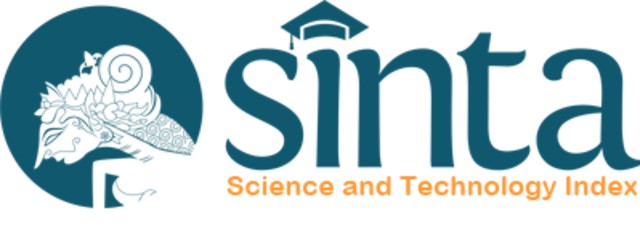Strategi Lembaga Keuangan Mikro Syariah dalam Mengembangkan Usaha Mikro (Kasus LKMS BMT KUBE SEJAHTERA Unit 20, Sleman-Yogyakarta)
Abstract
This research is done in Microfinance Institute (LKMS) Baitul Mal wat Tanwil (BMT) Kelompok Usaha Bersama (KUBE) Sejahtera unit 20 at Mlati subdistrict, Sleman Regency, Special District of Yogyakarta. The aim of this research is (1) identifying basic needs of micro enterprise, (2) identifying how far LKMS BMT towards the development of micro enterprise and (3) defining strategy needed in developing capacity of LKMS BMT and Micro Enterprise.
Methods taken in this reseach are collecting data and analysis method. Primary data are taken distributing questionnaire to 100 BMT customers, secondary data are taken from literatures, journals, bulletins, and seminar journals. Quantitative data analysis is done by analyzing the chi square, while the qualitative ones using Strengths, Weakness, Opportunities and Threats (SWOT).
From the result of this research it is obtained that BMT is giving chances by giving finance to the customers to make new enterprise. It is detected from the enterprises which are owned by the customers have brief period, that is less than 1 year (36%), 1 - 5 year (32%), over 5 year (32%). It is proved that they are interested to make new business along with the presence of BMT that offers fair and profitable profit sharing. From the aspect of total income before joining the BMT, is gained that their income in common is less than Rp. 200.000 (40%). After joining BMT the income in major raise between Rp. 200.000 - Rp. 2.999.999 (96%). This significant improvement shows that capital given by BMT is effectively used by the customers, and they are able to organized the capital well to make good profit.
Here, BMT role as assistant, BMT is guiding and directing, technically and the management of the enterprise. So than the members do not feel that they are fighting by themselves, but together with BMT.
From the analysis of internal and external strategic factor total score with IFAS total score = 2,9 and EFAS = 3,2, are gained IE matrix shown the growth condition, then implementation strategy is necessary; increasing capital credits for micro enterprise/industry, costs of customer’s saving such as administrative cost and interest cost should be eliminated, so that the customers are not oppressed by unnecessary cost, minimizing cost in costing process such as administration process, offering unique costing packages that is not offered by other costing package in other finance institution that has interesting profit sharing, choosing location closed to customers characterized by their enterprises, such as market place. There is BMT employee who is taking debitor deposits to the place of each debitor, if necessary. Advertorial is done by putting advertorial page in local paper. Testimony is gained through meeting with customers of the enterprise group. Sales force is necessary because not any customer is able to come, ask, and making transaction in the BMT office.
Downloads
References
Bintoro. 2003. Peranan Lembaga Keuangan Mikro dalam Penanggulangan Kemiskinan. Bappenas, Jakarta
Depsos. 2004. Pengembangan Usaha Ekonomi Produktif Melalui KUBE dan LKM. Departemen Sosial RI, Jakarta
Fadjrijah, S.C. 2006. Evaluasi Perbankan Syariah 2006 dan Arah Kebijakan Perbankan Syariah Ke Depan. Seminar Perbankan Syariah UIN Sunan Ampel, Surabaya.
Kusuma, S.H. 2002. Membangun Institusi Warga Untuk Menanggulangi Kemiskinan Masyarakat dan Kelembagaan Lokal. Jurnal Analisis Sosial, Vol. 7 No. 2 Juni 2002: 169-186. Akatiga, Bandung.
Rosyidi, S. 2006. Keharusan Ekonomi Islam. Seminar Perbankan Syariah UIN Sunan Ampel, Surabaya.
Setiabudi, B. 2002. Pendampingan yang Mandiri dan Berkelanjutan dalam Pengembangan Keuangan Mikro Guna Menanggulangi Kemiskinan. Gema PKM, Jakarta.
Siegel, S. 1997. Statistik Nonparametrik Untuk Ilmu-ilmu Sosial [Terjemahan]. PT. Gramedia Pustaka Utama, Jakarta.
Sugiyono. 2002. Metode Penelitian Bisnis. Alfabeta, Bandung.
Susilo, S. 2005. Pengaruh Karakteristik dan Perilaku UKM, serta Sistem Pembiayaan terhadap Penyaluran Pembiayaan BNI Syariah. Laporan Akhir (Tesis) pada Program Studi Industri Kecil Menengah, Institut Pertanian Bogor, Bogor.
Wiyono, T. 2003. Analisa Strategis Pola Pembiayaan Kredit Mikro pada Bank BNI : Solusi Pemenuhan Permodalan Bagi Usaha Kecil. Laporan Akhir (Tesis) pada Program Studi Industri Kecil Menengah, Institut Pertanian Bogor, Bogor.











